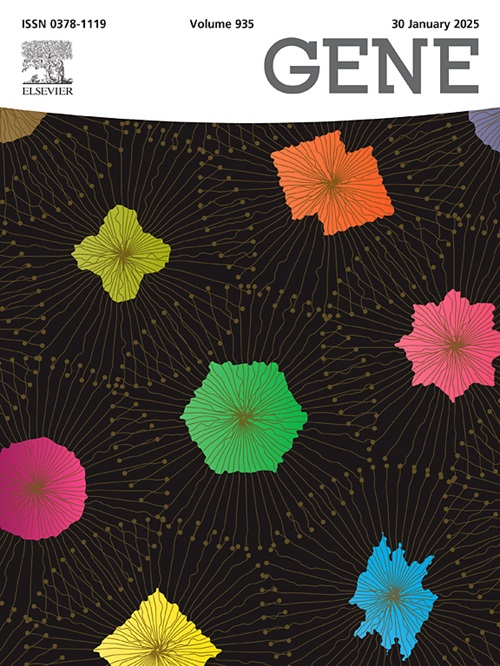Identification of a carotenoid cleavage dioxygenase gene TeCCD4a regulating flower color and carotenoid content of marigold
IF 2.4
3区 生物学
Q2 GENETICS & HEREDITY
引用次数: 0
Abstract
Marigold (Tagetes erecta) serves as both an ornamental and economically significant species, owing to its diverse floral coloration and exceptionally high petal carotenoid content. Carotenoid cleavage dioxygenase (CCD), as the key enzymatic component, mediates the carotenoid degradation process. In this study, we cloned and functionally characterized a CCD4 gene to elucidate its regulatory function in petal color and carotenoid biosynthesis. Our findings revealed that in the deep-orange marigold cultivar ‘Lady’, the expression of the TeCCD4a transcript initially increased before subsequently decreasing, reaching its peak at developmental stage S2. Conversely, in the cream-white cultivar ‘Vanilla’, TeCCD4a expression exhibited a steady rise throughout inflorescence development. Functional characterization revealed that overexpression of TeCCD4a in marigold induced a phenotypic transition of petal coloration from yellow to pale yellow, concomitant with metabolic alterations characterized by elevated accumulation of lycopene and violaxanthin, while reducing zeaxanthin and neoxanthin contents. In marigold transgenic lines, transcript levels of carotenogenic genes TePDS, TeZDS, and TeHYDB were upregulated, while TeLCYB, TeZEP4, and TeCCD4b were downregulated. Furthermore, promoter sequence analysis indicated that TeCCD4a expression may be regulated by multiple factors, as its promoter contains various cis-acting elements including light-responsive elements, stress-responsive elements, and hormone-responsive elements. This study provides a valuable gene resource and establishes a theoretical foundation for improving petal coloration and enhancing carotenoid accumulation in marigold.
调节万金菊花色及类胡萝卜素含量的类胡萝卜素裂解双加氧酶基因TeCCD4a的鉴定
万寿菊(Tagetes erecta)由于其多样的花色和极高的花瓣类胡萝卜素含量,既是一种观赏植物,也是一种经济上重要的物种。类胡萝卜素裂解双加氧酶(CCD)是介导类胡萝卜素降解过程的关键酶。本研究克隆CCD4基因并对其进行功能表征,以阐明其在花瓣颜色和类胡萝卜素生物合成中的调控功能。研究结果表明,在深橙色万金菊品种“淑女”中,TeCCD4a转录本的表达先上升后下降,在发育阶段S2达到峰值。相反,在乳白色品种‘Vanilla’中,TeCCD4a的表达在整个花序发育过程中稳步上升。功能表征表明,过表达TeCCD4a诱导万金菊花瓣颜色从黄色向淡黄色表型转变,并伴有代谢改变,其特征是番茄红素和紫黄质积累增加,玉米黄质和新黄质含量减少。在万金菊转基因品系中,致胡萝卜素基因TePDS、TeZDS和TeHYDB转录水平上调,而TeLCYB、TeZEP4和TeCCD4b转录水平下调。此外,启动子序列分析表明,TeCCD4a的表达可能受到多种因素的调控,其启动子含有多种顺式作用元件,包括光响应元件、应激响应元件和激素响应元件。该研究为金盏花改善花瓣颜色、促进类胡萝卜素积累提供了宝贵的基因资源和理论基础。
本文章由计算机程序翻译,如有差异,请以英文原文为准。
求助全文
约1分钟内获得全文
求助全文
来源期刊

Gene
生物-遗传学
CiteScore
6.10
自引率
2.90%
发文量
718
审稿时长
42 days
期刊介绍:
Gene publishes papers that focus on the regulation, expression, function and evolution of genes in all biological contexts, including all prokaryotic and eukaryotic organisms, as well as viruses.
 求助内容:
求助内容: 应助结果提醒方式:
应助结果提醒方式:


